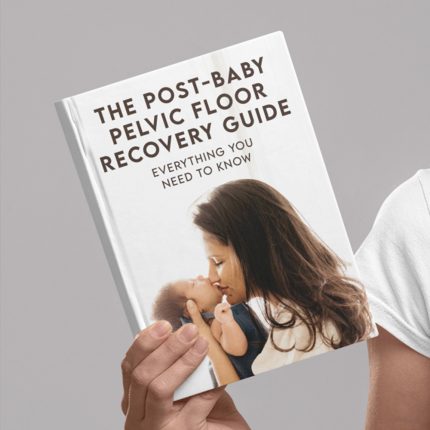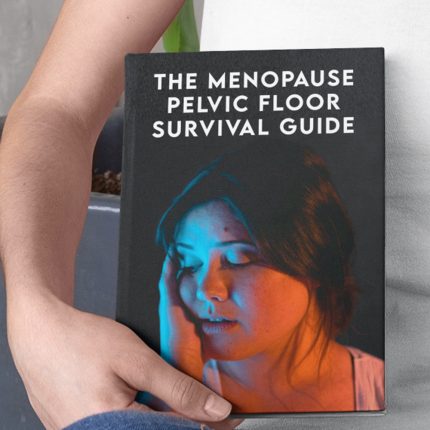Pelvic floor therapy isn’t just for the seasoned yogi or the zen master—it's for anyone who’s ever wished for a little extra support from the inside out. Whether you’re dealing with unexpected leaks at a party, nagging pelvic pain that ruins your vibe, or just curious about boosting your core stability in the quest for ultimate wellness, this guide dives deep into what pelvic floor therapy treats, how it works, and why it’s becoming the secret sauce in your holistic health journey.
Quick Links to Useful Sections
- Understanding Pelvic Floor Therapy: What’s the Fuss All About?
- Conditions and Complaints: The Common Culprits We’re Up Against
- On the Move: How Pelvic Floor Therapy Works Its Magic
- 1. Muscle Retraining and Strengthening
- 2. Manual Therapy Techniques
- 3. Biofeedback
- 4. Complementary Therapies
- Spotlight on Urinary Incontinence: Handling Life’s Surprises
- Addressing Pelvic Pain: Finding Relief and Renewed Comfort
- Supporting Pelvic Organ Prolapse: Restoring Your Internal Support System
- Enhancing Sexual Function and Intimacy
- Postpartum Recovery: Reclaiming Your Body After Childbirth
- When Should You Consider Pelvic Floor Therapy?
- Tips and Tricks for Maximizing Your Pelvic Floor Therapy Routine
- Start Slow and Build Gradually
- Consistency is the Name of the Game
- Mix It Up with Mindful Movement
- Leverage Technology
- Invest in Your Comfort
- Engage a Specialist
- Navigating the Journey: Integrative and Holistic Approaches to Pelvic Floor Health
- Resources and Community Support: Your Next Steps
- Creating a Personalized Plan: The Roadmap to Pelvic Floor Success
- Step 1: Get Assessed
- Step 2: Set Realistic Goals
- Step 3: Mix Modalities
- Step 4: Establish a Routine
- Step 5: Reassess and Adapt
- Pelvic Floor Therapy and Lifestyle: Integrating Wellness into Your Daily Grind
- Integrative Techniques: When Traditional Meets Modern
- Cutting-Edge Biofeedback
- Smart Devices and Mobile Apps
- Chiropractic and Manual Therapies
- Your Journey to a Confident, Empowered You
- Integrative Pelvic Floor Therapy FAQs: Your Burning Questions Answered
- Embrace the Change: Your Future with Better Pelvic Health
Understanding Pelvic Floor Therapy: What’s the Fuss All About?
Picture your pelvic floor as a trampoline made of muscles, ligaments, and connective tissues that not only supports your organs but helps you control those moments when your body decides to “oops” unexpectedly. Pelvic floor therapy is a multi-disciplinary approach that fixes, strengthens, and soothes these muscles to keep you feeling confident and in control. And while it might sound like a niche area of medicine, it’s more common than you think—impacting a wide range of issues from incontinence to pelvic pain.
From athletes to busy professionals and even the tech-savvy Gen Z crowd, a comprehensive pelvic floor therapy regimen can dramatically improve your quality of life. So, what exactly does this therapy treat? Let’s break it down in a way that’s as engaging as scrolling through your favorite TikTok health hacks.
Conditions and Complaints: The Common Culprits We’re Up Against
When it comes to pelvic floor dysfunction, it’s not a one-size-fits-all scenario. The conditions treated by pelvic floor therapy range from mild annoyances to full-blown medical issues that can seriously impact your day-to-day life. Here’s a rundown of the main conditions:
- Urinary Incontinence: Accidentally leaking a little water when you sneeze, laugh, or exercise is more common than you might believe. Pelvic floor therapy helps retrain your muscles to hold it together.
- Fecal Incontinence: Though a topic many shy away from, issues with bowel control can be addressed with targeted exercises and lifestyle modifications.
- Pelvic Pain: This can be chronic pelvic pain (CPP) or localized discomfort that makes sitting through your favorite long-form series a challenge.
- Pelvic Organ Prolapse: When the pelvic organs start to sag or descend, therapy can work wonders in strengthening the muscles to provide better support.
- Sexual Dysfunction: Both men and women can experience pain during intimacy or other sexual dysfunctions stemming from an imbalanced pelvic floor.
- Postpartum Recovery: After childbirth, many women benefit from pelvic floor therapy to regain strength, control, and confidence.
- Constipation and Bowel Movements: Believe it or not, a sluggish pelvic floor can affect your digestive system, making constipation a frequent complaint.
The beauty of pelvic floor therapy lies in its adaptability. The same principles that help a postpartum mom regain control can also assist someone recovering from surgery or dealing with chronic pelvic pain. With a customized approach, pelvic floor therapy treats what ails you while honoring the unique blueprint of your body.
On the Move: How Pelvic Floor Therapy Works Its Magic
The inner workings of pelvic floor therapy are as fascinating as the human body’s hidden talents. It transcends the traditional “Kegel exercise” stereotype by embracing a multi-modal approach that’s both innovative and holistic. Let’s take a quick tour through the mechanisms that make it so effective:
1. Muscle Retraining and Strengthening
At its core, pelvic floor therapy aims to retrain the muscles to contract and relax properly, much like coaching your muscles to perform a flawless dance routine. Celeb-endorsed Kegel exercises, reverse Kegels, and integrated core workouts help restore muscle tone, stamina, and coordination.
2. Manual Therapy Techniques
Think of this as the deep tissue massage for your pelvic floor. Manual techniques such as myofascial release and trigger point therapy help reduce tension and pain, offering immediate relief while setting the stage for long-term improvements.
EXPLORE OUR EXPERT WOMENS'S PELVIC FLOOR GUIDES WITH HIDDEN TIPS AND TRICKS
👩💻 Educational Book Store (Instant Download) 👩💻
3. Biofeedback
Welcome to the digital era of healing—biofeedback uses technology to help you see and understand the activity of your pelvic muscles in real time. This feedback loop empowers you to correct your technique and track progress, making your workout sessions way more effective.
4. Complementary Therapies
Beyond the core exercises, therapies such as acupuncture, chiropractic adjustments, and even targeted massage provide added layers of relief and support. These therapies address not just the physical symptoms but also the underlying stressors contributing to dysfunction.
In essence, pelvic floor therapy is a blend of art and science—a tailor-made solution to support a system so critical yet often neglected. As you practice these techniques, you’re not merely repairing your body—you’re reclaiming control and resilience from within.
Spotlight on Urinary Incontinence: Handling Life’s Surprises
Let’s face it: no one signs up for those “forgotten leaky moments”—from surprising dribbles after laughing too hard to timed leaks during your intense gym sessions. Urinary incontinence, the uninvited guest at many social gatherings, is one of the primary conditions addressed by pelvic floor therapy.
The good news for anyone facing this challenge is that targeted pelvic floor exercises can significantly improve bladder control over time. Pelvic floor therapy often begins with gentle exercises aimed at increasing muscle strength and endurance. As your inner “support squad” gets stronger, you’ll notice decreased leaks, more confidence during physical activities, and even improvements in overall core stability.
Lifestyle tips such as timed voiding and dietary modifications may also be recommended to help reduce symptoms. For those experiencing more severe cases, your specialist might incorporate electrical stimulation or biofeedback—tools that transform abstract muscle movements into visible improvements.
Addressing Pelvic Pain: Finding Relief and Renewed Comfort
If you’ve ever described your pelvic pain as “that pesky pain that just won’t quit,” then you know how disruptive it can be. Chronic pelvic pain (CPP) can affect everything from sitting at your desk to enjoying a night out dancing. But here’s the silver lining: pelvic floor therapy has proven to be a powerful ally in the battle against discomfort.
With a carefully designed treatment plan, pelvic floor therapy focuses on relaxing overly tense muscles, reducing inflammation, and restoring normal muscle function. Manual therapy techniques, including myofascial release and trigger point therapy, directly target the areas of pain, while mind-body practices like yoga and deep breathing complement these efforts by reducing stress, one puff of peaceful breath at a time.
By integrating these techniques, many patients experience a significant reduction in pain, improved daily functioning, and, most importantly, a renewed sense of hope. Who knew that some mindful stretching and precise muscle work could translate into a more comfortable, confident life?
Supporting Pelvic Organ Prolapse: Restoring Your Internal Support System
Pelvic organ prolapse occurs when the muscles and tissues supporting your pelvic organs weaken, causing one or more organs to descend into the vaginal canal. It might sound like a plot twist in a medical drama, but it’s a condition that affects countless individuals.
Pelvic floor therapy for prolapse is all about rebuilding the support system from the inside out. Customized exercise programs are designed to enhance muscle tone and restore the natural positioning of the pelvic organs. These exercises work hand-in-hand with manual therapy and, in some cases, may even be augmented with devices that ensure you’re using the right muscle groups.
The goals here are not only to alleviate discomfort but also to empower your body with the strength and stability it desperately needs. With regular practice and professional guidance, pelvic floor therapy can help minimize the symptoms of prolapse and keep things firmly in place—both literally and figuratively.
Enhancing Sexual Function and Intimacy
The pelvic floor plays a pivotal role in sexual arousal, pleasure, and function for all genders. When the pelvic muscles are tight, weak, or uncoordinated, it can lead to reduced sensation, painful intercourse (dyspareunia), or difficulties reaching orgasm—issues that can impact self-esteem and intimate relationships.
Pelvic floor therapy offers a pathway to restoring a healthy, functional, and even enhanced sexual life. Through exercises aimed at both strengthening and relaxing the pelvic muscles, alongside manual techniques and, at times, biofeedback, many individuals find an improvement in sexual performance and overall satisfaction. Practices like mindful meditation and deep breathing not only soothe anxiety but also create a stronger mind-body connection, which in turn can lead to better sexual responsiveness.
Empowerment in this area is about reclaiming intimacy on your own terms, fostering both physical pleasure and emotional connection. So, if you’re ready to spice things up and boost your confidence, consider incorporating pelvic floor therapy into your wellness arsenal.
Postpartum Recovery: Reclaiming Your Body After Childbirth
Childbirth is a miraculous yet physically transformative experience. Along with the joy of welcoming a new life comes the challenge of recovering from the strain that pregnancy and delivery placed on your body. Pelvic floor therapy is a core component of postpartum recovery, helping to rebuild the strength and resilience of those muscles that have been through the wringer.
After childbirth, women often experience issues such as urinary incontinence, pelvic pain, and a sense of weakened core support. A well-structured pelvic floor therapy regimen—which might include gentle exercises, biofeedback sessions, and hands-on manual therapy—can help restore muscle strength and coordination. This recovery isn’t just about physical healing; it’s about regaining the confidence to enjoy motherhood without worrying about unexpected leaks or discomfort.
With professional guidance and a personalized approach, postpartum pelvic floor therapy can jump-start your journey to feeling strong, supported, and ready to take on whatever life throws your way.
When Should You Consider Pelvic Floor Therapy?
You might wonder, “Do I really need pelvic floor therapy?” The honest answer is—it depends on your circumstances! If you’ve noticed any of the following signs, it might be time to consult a specialist:
- Frequent or unexpected urinary leaks during everyday activities.
- Persistent pelvic or low-back pain that doesn’t improve with regular rest or stretching.
- Discomfort during sexual activities or a decline in sexual function.
- Symptoms of pelvic organ prolapse, such as a feeling of heaviness or pressure in the pelvic region.
- Struggles with bowel control leading to constipation or incontinence.
- Postpartum recovery challenges where restoring core strength and control is an issue.
Early intervention is key. The sooner you address these issues with a comprehensive pelvic floor therapy plan, the faster you can regain control, reduce discomfort, and improve your quality of life. Think of it as giving your body the TLC it deserves before minor issues evolve into bigger challenges.
Tips and Tricks for Maximizing Your Pelvic Floor Therapy Routine
Ready to integrate pelvic floor therapy into your daily routine but not sure where to start? Here are some practical, down-to-earth tips to help you optimize your exercises and make the most out of your sessions:
Start Slow and Build Gradually
Just like binge-watching a series, diving headfirst into intense workouts can lead to burnout. Ease into your pelvic floor exercises with simple techniques and gradually increase the intensity as your muscles strengthen.
Consistency is the Name of the Game
Whether you’re busy studying for finals or balancing work and play, finding a few minutes each day for your pelvic floor routine is essential. A steady, daily practice creates long-term benefits that stick.
Mix It Up with Mindful Movement
Incorporate practices like yoga, Pilates, or deep breathing into your exercise regimen. These not only strengthen the pelvic floor but also reduce stress and enhance the mind-body connection.
Leverage Technology
There are plenty of apps and biofeedback devices available that can help you track your progress and ensure you’re performing exercises correctly. Use these digital tools to stay motivated—after all, progress is better when you can see it in real-time.
Invest in Your Comfort
Whether it’s a supportive cushion for your chair or a yoga mat that makes your workouts more enjoyable, a little investment in comfort goes a long way in keeping you motivated.
Engage a Specialist
Finally, don’t hesitate to seek professional guidance. A pelvic floor specialist can create a customized plan tailored to your unique needs, ensuring that your exercises are both effective and safe.
Navigating the Journey: Integrative and Holistic Approaches to Pelvic Floor Health
While targeted exercises form the backbone of pelvic floor therapy, many individuals find that an integrative, holistic approach amplifies the benefits. Picture this: along with your daily pelvic floor exercises, you’re incorporating mindful meditation, nutritional tweaks, and even acupuncture sessions. This comprehensive strategy isn't just about fixing symptoms—it’s about nurturing a profound mind-body connection that restores balance in every aspect of your life.
Embracing a holistic approach means understanding that your pelvic floor is not isolated from your overall health. Stress, diet, posture, and even how well you sleep ripple into the functionality of your pelvic muscles. By addressing these interconnected factors, you empower your body to heal in a way that’s both natural and sustainable.
The integrative journey is not always linear—it’s a blend of science, mindfulness, and lifestyle finesse. It’s about celebrating small victories, like a single leak-free day or a week of consistent practice, and then building on that momentum until you’re thriving in every way.
Resources and Community Support: Your Next Steps
Venturing into pelvic floor therapy might feel like you’re stepping into uncharted territory, but remember: you’re not alone. Whether it’s joining an online community, exploring webinars with pelvic health experts, or simply reading blogs and guides like this one, a wealth of resources is waiting for you.
Look for local pelvic floor specialists and physiotherapy centers that focus on holistic care. Many clinics now offer both in-person and virtual consultations, making it easier than ever to access specialized support. Social media groups and forums dedicated to pelvic health provide safe spaces to share experiences, swap tips, and celebrate progress.
Additionally, many educational websites offer free guides, video tutorials, and downloadable exercise plans to kickstart your journey. The more you understand what your body needs and the available strategies to help it, the more empowered you’ll feel in making informed decisions about your health.
Your journey towards a stronger, healthier pelvic floor is a personal one, but it doesn’t have to be a solo expedition. Engage with community support, leverage expert advice, and celebrate every win along the way. With the right resources and a solid plan in place, you’re well on your way to reclaiming control and finding balance.
Creating a Personalized Plan: The Roadmap to Pelvic Floor Success
One of the biggest strengths of pelvic floor therapy is its flexibility—it can be as unique as you are. The key to long-lasting benefits is crafting a personalized therapy plan that respects your body’s specific needs. Here’s how to build your roadmap:
Step 1: Get Assessed
Start your journey with a comprehensive evaluation by a pelvic floor specialist. This assessment should cover everything from your exercise habits to your diet, sleep patterns, and overall stress levels. Understanding your baseline is critical to tailoring an effective plan.
Step 2: Set Realistic Goals
Define what success looks like for you. Is it fewer leaks during that intense spin class, a reduction in pelvic pain, or even a boost in sexual confidence? Write down these goals and use them as milestones to gauge your progress.
Step 3: Mix Modalities
Combine the core strengths of pelvic floor exercises with complementary therapies. This might include integrating biofeedback sessions, exploring massages or chiropractic adjustments, and incorporating mind-body practices like yoga and meditation.
Step 4: Establish a Routine
Consistency is where the magic happens. Build a daily or weekly routine that includes time for physical exercises, mindfulness practices, and even proper nutrition. Use digital apps or a simple journal to track your progress and adjust your plan as needed.
Step 5: Reassess and Adapt
As your body evolves and adapts, so should your therapy plan. Regular check-ins with your healthcare provider can ensure that you’re continuously moving forward. Celebrate your progress and be open to tweaking your strategy to maintain momentum.
With a personalized plan in hand, you’re not just reacting to pelvic floor issues—you’re proactively building a resilient, empowered body that’s ready to take on life’s challenges.
Pelvic Floor Therapy and Lifestyle: Integrating Wellness into Your Daily Grind
Your pelvic floor health doesn’t exist in a vacuum—it’s one piece of your overall well-being mosaic. That’s why integrating pelvic floor therapy with your daily lifestyle choices is essential for long-term success. Imagine every mindful breath, nutritious meal, and simple stretch as a high-five for your insides.
Consider these lifestyle tweaks to complement your therapy:
- Posture Power-Up: Sitting for long hours can weaken your core support. Incorporate regular breaks to stand up, stretch, and reset your posture.
- Stress Less: Chronic stress often leads to muscle tension. Activities like meditation, journaling, or even a quick walk outside can lower stress hormones and help your muscles function better.
- Smart Nutrition: An anti-inflammatory diet rich in fruits, vegetables, lean proteins, and omega-3 fatty acids supports muscle repair and reduces systemic inflammation.
- Hydration Station: Drinking sufficient water keeps your muscles pliable and helps prevent tissue stiffness that might exacerbate pelvic issues.
Merging these lifestyle practices with your pelvic floor routine creates a holistic environment for healing and growth. It’s about choosing to nurture your body every day, even when you’re busy juggling work, studies, or social life.
Integrative Techniques: When Traditional Meets Modern
The landscape of pelvic floor therapy is evolving, merging the tried-and-true methods of traditional medicine with modern technologies and integrative approaches. This seamless blend is what’s turning heads in the wellness community. Here’s how:
Cutting-Edge Biofeedback
Biofeedback isn’t just a fancy term thrown around in medical journals—it’s a real, hands-on tool that visually demonstrates your muscle activity. With sensors placed on the body, you can literally see your pelvic muscles in action as you engage them, offering a clear picture of your progress and helping you fine-tune your technique.
Smart Devices and Mobile Apps
The digital age has ushered in a plethora of apps and devices designed to assist in pelvic floor training. From guided exercise videos and reminders to detailed progress trackers, these tools are tailored to keep your routine fresh, motivating, and aligned with your goals.
Chiropractic and Manual Therapies
Combining exercises with hands-on therapies—like chiropractic adjustments and manual therapy techniques—creates a dynamic duo that addresses both muscular strength and mobility. This integrative strategy ensures that while your own efforts are building strength, expert interventions are breaking down tension and enhancing tissue function.
It’s a brave new world where ancient wisdom meets modern science, giving you all the advantages to build a pelvic floor that stands the test of time.
Your Journey to a Confident, Empowered You
At the end of the day, pelvic floor therapy is more than a treatment—it’s an empowering journey towards reclaiming control over your body and enhancing your overall well-being. Whether you’re a busy student, a working professional, or someone navigating the ups and downs of postpartum recovery, this holistic approach gives you the tools to feel strong, capable, and ready to dominate life’s challenges.
As you embark on this journey, remember that every small step counts. Each mindful breath during meditation, every carefully executed Kegel, and every nourishing meal is a step towards a future where you’re in command of your body’s narrative. It’s about integrating science and self-care into a daily ritual that celebrates your resilience and strength.
So here’s to a vibrant, empowered you—confident in every move, and unapologetically in charge of your inner well-being.
Integrative Pelvic Floor Therapy FAQs: Your Burning Questions Answered
Below are some of the most common questions we get about pelvic floor therapy, along with straightforward answers to help you navigate your journey.
1. What conditions does pelvic floor therapy treat?
Pelvic floor therapy addresses issues such as urinary and fecal incontinence, chronic pelvic pain, pelvic organ prolapse, sexual dysfunction, postpartum recovery challenges, and even digestive issues related to muscle tension.
2. How does pelvic floor therapy work?
The therapy typically combines targeted exercises (like Kegels and reverse Kegels), manual therapy, biofeedback, and complementary approaches such as acupuncture and mindfulness practices to strengthen, relax, and retrain the pelvic muscles.
3. Can I perform pelvic floor exercises at home?
Yes! Many pelvic floor exercises can be safely performed at home. However, it’s best to consult with a specialist to ensure you’re using the proper techniques and to tailor an exercise plan to your unique needs.
4. How long does it take to see improvements?
Results vary—but with consistent practice and holistic support, many people begin noticing improvements within a few weeks to a few months.
5. Are there any risks associated with pelvic floor therapy?
When performed correctly under professional guidance, pelvic floor therapy is generally safe. Overdoing exercises or performing them incorrectly can potentially cause muscle strain, so personalized guidance is key.
6. Do men benefit from pelvic floor therapy?
Absolutely. Men can benefit greatly, especially those dealing with post-prostate surgery recovery, chronic pelvic pain, or incontinence issues.
7. What complementary therapies are often combined with pelvic floor therapy?
Integrative treatments such as acupuncture, chiropractic care, massage therapy, and mindfulness practices are frequently used in conjunction with pelvic floor exercises to provide a comprehensive approach.
8. How can technology enhance my pelvic floor therapy?
Modern tools such as biofeedback devices, mobile apps, and online video tutorials can help you track your progress, ensure proper technique, and keep you motivated throughout your journey.
9. Is pelvic floor therapy covered by insurance?
Coverage varies. It’s best to check with your insurance provider to see what services and sessions might be covered under your plan.
10. How do I know if an integrative approach is right for me?
A consultation with a pelvic floor specialist can help determine if the integrative and holistic approach—combining exercises with complementary therapies—is best suited to address your particular concerns.
Embrace the Change: Your Future with Better Pelvic Health
Embracing pelvic floor therapy is about more than just treating symptoms—it's about empowering yourself with the knowledge, skills, and tools needed for a healthier tomorrow. Modern challenges call for modern solutions, and integrating a comprehensive pelvic floor therapy regimen into your lifestyle can set you on a course toward renewed confidence and overall wellness.
Whether you’re managing a specific condition or simply investing in your long-term well-being, remember that every effort counts. With personalized plans, cutting-edge technology, and a holistic mindset, you’re taking control of your health in a way that resonates with your unique lifestyle and goals.
Embrace the journey with all its ups and downs, celebrate your small victories, and know that every mindful stretch and every moment of self-care contributes to a stronger, more resilient you. Your journey to empowered pelvic health is just beginning—step into it with confidence and let your inner strength shine.
Here’s to a future where you laugh without worry, move without pain, and live life unapologetically in control – inside and out.
Curious About Your Pelvic Floor? Explore our curated collection of insightful articles to learn more and take charge of your health.
- Pelvic Floor Basics
- Pelvic Floor Exercises & Workouts
- Pelvic Floor Kegel Exercises: Techniques & Benefits
- Advanced Pelvic Floor Workouts
- Pre/Post-Natal Pelvic Floor Routines
- Pelvic Floor Exercises for Men
- Pelvic Floor Therapy Techniques
- At-home vs Professional Pelvic Floor Therapy Options
- Diet & Lifestyle for a Healthy Pelvic Floor
- Pelvic Floor Health & Wellness
- Specialized Pelvic Floor Conditions & Treatments
Now back to the main article!






















